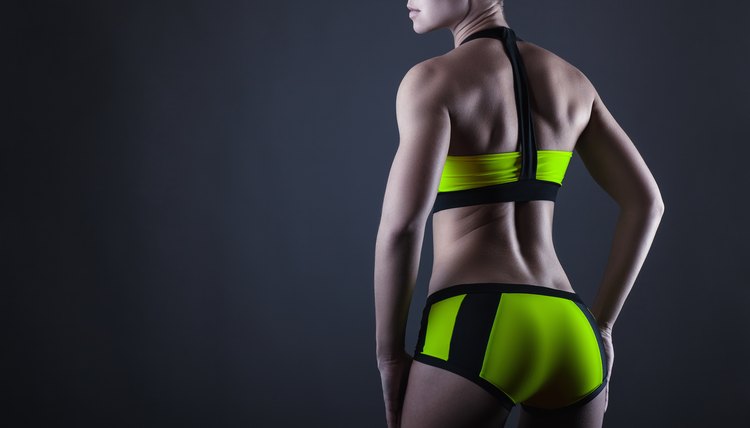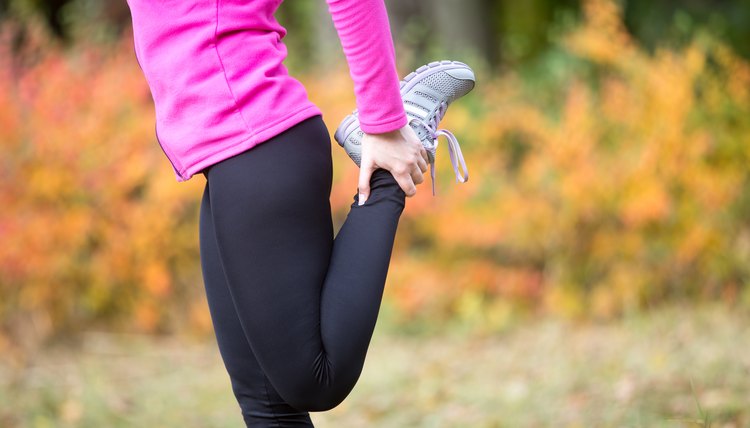What does fact checked mean?
At SportsRec, we strive to deliver objective content that is accurate and up-to-date. Our team periodically reviews articles in order to ensure content quality. The sources cited below consist of evidence from peer-reviewed journals, prominent medical organizations, academic associations, and government data.
The information contained on this site is for informational purposes only, and should not be used as a substitute for the advice of a professional health care provider. Please check with the appropriate physician regarding health questions and concerns. Although we strive to deliver accurate and up-to-date information, no guarantee to that effect is made.
What Are the Main Muscles in the Buttocks & Thighs?

As a fitness enthusiast, your butt and legs are your best commodity — or your worst. While you may want a firmer butt or to avoid the dreaded chicken legs, failing to understand muscular movement may slow progress toward your goal. Understanding the muscles within your legs and bum leads to understanding why they are trained in specific ways.
Butt Muscles
Of the three buttocks muscles, the gluteus maximus is the largest (as well as the largest muscle in the human body). The gluteus maximus originates on the ilium — the largest bone of the pelvis — and inserts on the femur with primary responsibility for hip extension and hip external rotation.
Your two smaller buttocks muscles are the gluteus medius and gluteus minimus. While they have the same origin and insertion points, they have different movement responsibilities. Abduction, transverse abduction and internal rotation are performed by the medius and minimus.
Three exercises that train the buttocks are squats, dumbbell lunges and step-ups.
Thigh Muscles
While there are a number of smaller muscles in your thighs, the two major muscle groups are the quadriceps, on the front, and the hamstrings, on the back.

What Are the Main Muscles in the Buttocks & Thighs?
Quadriceps
The front of your thighs consists of the four muscles of the quadriceps. The rectus femoris, largest of the four, extends the knee and flexes the hips. It originates on the front and lower portion of the ilium and inserts on the tibia bone of the lower leg.
The three remaining muscles — vastus lateralis, vastus intermedius, vastus medialis — deal only with the extension of the knee. They all originate on the thigh bone, the femur, and insert on the tibia bone. While exercises for the buttocks also train the quadriceps, a few focused exercises are the leg extension and 45-degree leg press.
Hamstrings
The hamstrings consist of four muscles, the two largest being the semitendinosus and the long head of the biceps femoris. These two muscles originate on the lower part of the hip bone and insert on the tibia, which is the the larger of the two bones in your lower leg. They are responsible for the flexion of your knee and the extension of your hips. Training the hamstrings require exercises such as the stiff-legged deadlift, leg curl and hyperextension.
References
Writer Bio
Timothy Owens has been in the fitness and wellness industry since 2000. He holds a Master of Arts in physical education: sport and exercise science from the University of North Carolina at Pembroke and is a certified personal trainer through the National Council on Strength & Fitness. Owens worked as a exercise physiologist and personal trainer for eight years until moving into recreation administration and management.
